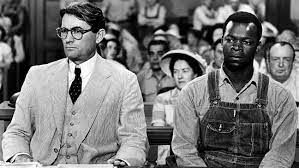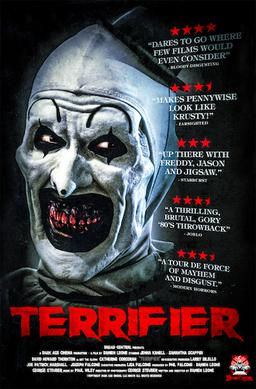To Kill a Mockingbird (1962) review
- Jeremy Kelly
- May 12, 2022
- 4 min read
To Kill a Mockingbird (1962)
Directed by: Robert Mulligan
Produced by: Alan J. Pakula
Screenplay by: Horton Foote
Starring: Gregory Peck, Mary Badham, Phillip Alford, John Megna, Ruth White, Paul Fix, Brock Peters, Frank Overton

Good lord, there are so many social issues happening right now, I don’t know which one to be more depressed about. The war in Ukraine? Roe v. Wade? COVID-19? The housing market? Climate change? Gerrymandering as a result of the continuous lies about voter fraud in the 2020 Presidential Election? Eh, let’s go back to racism; it’s a classic sickness of humanity. Based on the Pulitzer Prize-winning Harper Lee novel, “To Kill a Mockingbird” is approaching its 60th anniversary, and is simultaneously a renowned work of cinema and a controversial hot point, so much that the novel is still being banned in some schools because of its racial overtones—oh yeah, book burning, another sobering topic. But putting aside the timeliness of the subject matter, it’s still a smart coming-of-age story filled with incredible performances and powerful dialogue.
It takes place in Maycomb, Alabama in the early 1930s; young Jean Louise “Scout” Finch (Mary Badham) lives with her older brother Jem (Phillip Alford), and has a typically care-free childhood, playing and getting in trouble with their friend Dill (John Megna), and frequently trying to learn about their mysterious, reclusive neighbor Arthur “Boo” Radley (Robert Duvall). Meanwhile, their stern but loving attorney father Atticus (Gregory Peck) is charged with representing a black man named Tom Robinson (Brock Peters), who’s been accused of raping a white teenage girl, the nervous and haggard Mayella Ewell (Collin Wilcox). Though often browbeaten by her ornery racist father Bob (James Anderson), Atticus represents Tom in court. As the trial goes on, Scout and Gem watch from the balcony, and are gradually exposed and matured by the cruelty of the angry, bigoted public.

I’ve talked a little before about Gregory Peck in my reviews of “Cape Fear” and “The Omen,” but this is the movie most people know him from—in fact, it’s the role that came to define his career and who he was as a person. Atticus Finch is one of the most respected characters in literature; in an age before sarcasm and cynicism became a common tactic in wars of words, this is a man who believes in killing with kindness and patient wit, outright refusing to stoop to an attacker’s level. But at the same time, he’s not soft or sanctimonious about it; he’s perfectly willing to be blunt about how he views things, whether it’s to his children, the jury of the court, or a lynch mob. There’s such a dignity to his courtroom scenes; he’s not there to put on a show or hit whatever buzzwords he thinks will help Tom’s case, but just to lay down the facts pure and simple, his natural charisma and authoritativeness on full display. It’s probably no shock to hear this, but Peck won the Academy Award for Best Actor, while Atticus was named the greatest movie hero of the 20th century by the American Film Institute.
There’s been plenty of backlash over the years, some of it stemming from the fact that the film seems to promote a “white savior” narrative, in which a white central character has to rescue non-white characters from unfortunate circumstances. I can understand that viewpoint, because there’s little character depth in Tom or his family; but remember the time period and setting, post-Great Depression and still one of the deepest red states in the U.S., even almost 90 years after this time period (we’ll see if I get cancelled in Alabama too). It feels authentic given the situation, and I would argue that the movie isn’t as much about racism as it is about a child’s exposure to racism, or even just the notion that the world will not always be so innocent, giving way to very bad people doing very bad things. This isn’t Tom or even Atticus’s story; it’s Scout and Jem’s.

It’s impressive just to watch how the tone evolves throughout the run time, starting off somewhat whimsical as we watch these kids goof off and pout and be adventurous like kids do, with only snippets of the world around them that works in ways they don’t yet understand. The backdrop of Boo Radley and scenes of them poking around his house feels like one of those urban legends that get passed around the playground, and the way it ultimately pays off is quite beautiful. As the film goes on, Scout and Jem never lose what makes them so endearing, but we see how these events are affecting them; it’s terrifically understated work from Phillip Alford as Jem and Mary Badham as Scout, and they have outstanding chemistry with Peck, so much that he and Badham kept in touch over the years, always calling each other by their character names. If this trinity didn’t have such a natural bond, I don’t believe it gets its current reputation.
As it is, I think you’ll find very little wrong with “To Kill a Mockingbird,” but if I had to nitpick, I’d probably say there could be a little more sense of urgency among Tom’s family during the legal proceedings; everything seems a little too calm to feel realistic. But the impact of these scenes and the film as a whole still shines through; aside from Peck, it also won Oscars for Best Screenplay and Art Direction, netting eight nominations in total, and is today viewed as one of the premiere courtroom dramas in the history of film. The idealism may be overstated to the point of absurdity, but the dialogue, performances and mood still sell it, making the story come across as honest and provocative. We’ve all seen the memes, but to those who want to ban this story because it makes them “uncomfortable,” that’s the point; we need to show people of all ages that there’s ugly behavior in our history, and it sucks, but it’s ultimately how we learn.
My rating: 9.5/10





Comments